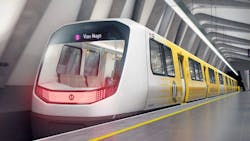L.A. Metro releases benefits, construction timeline for potential Sepulveda Transit Corridor project
Los Angeles County Metropolitan Transportation Authority (L.A. Metro) released new details about its Sepulveda Transit Corridor project, including the benefits, anticipated costs and construction schedule. Shared during the first of five community meetings, the agency says the details provide important context that will be considered as the project advances and decisions regarding alternatives are made.
If the project is built, travel times between the Van Nuys Metrolink Station to the L.A. Metro Expo Line would be between 18 to 33 minutes, depending on the alternative selected, while travel times between Van Nuys Metrolink Station to Century City and Santa Monica would range from 25 to 36 minutes and 32 to 50 minutes, respectively.
The agency notes commute projections represent significant time savings over the same trips via personal vehicle and could cut travel times by more than half during rush hour. Ridership projections for the alternatives under consideration range from 63,000 to 124,000 daily boardings.
L.A. Metro notes that more than 400,000 people cross the Sepulveda Pass each weekday and a typical San Fernando Valley commuter loses 59 hours per year to traffic delays just from the evening drive home on I-405 between Wilshire Boulevard and Ventura Boulevard. According to the agency, only two percent of people who currently travel through the Sepulveda Corridor do so on public transit via bus. In addition to providing residents and visitors with an alternative to sitting in traffic on the I-405, the project stands to improve air quality, public health, traffic safety and the region’s economic productivity.
The agency says the cost to build the project is estimated to be between $15.4 billion and $24.4 billion while yearly operations and maintenance of the system would cost between $130 million and $157 million. According to L.A. Metro, cost projections are preliminary, as the project is only at 15 percent design and will continue to be refined as it advances through the development process.
The Draft Environmental Impact Report for the project (DEIR), which will be released soon, will contain detailed analysis of the environmental impacts of the five alternatives. The official public comment period will begin with the release of the DEIR. L.A. Metro notes the alternatives vary by technology, alignments, termini, stations and connection to UCLA. A future decision on which alternative to advance will take into account findings from the DEIR, public comments received during the comment period, technical analyses, stakeholder input and other factors such as project objectives, cost and expected ridership.
